The Mr. and I have been spending a huge amount of time working on the front, back and side yards of Storybook Cottage. Despite our time consuming and heroic efforts we still have several bare or overgrown hedges. Today’s post, Creating English Style Hedges, is full of inspiring eye candy for me, and perhaps for you.
But First French Hedges
So let’s talk about hedges. I have been blessed over the years to have seen many stupendous examples of lovely hedges and gardens. The Garden of Versailles is one of my favorites. It features some of the world’s loveliest specimens of classic French style topiaries and hedges.

It was begun in 1661 by King Louis XIV. Gardener to the King, André le Nôtre, worked on establishing and maintaining the garden for over 40 years.
If you would like to know a bit more please visit this link on the Versailles website.
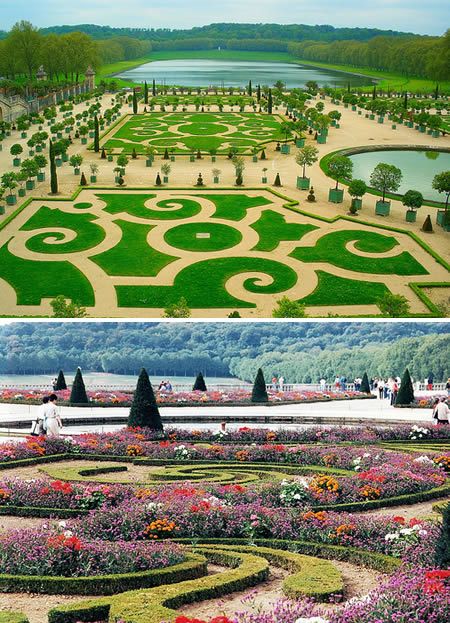
If you would like to know a bit more please visit this link on the Versailles website. Also, if you have not seen the film A Little Chaos I wholeheartedly recommend it.
It would be Queen Marie Antoinette who would bring the English garden style to Versailles in 1777.

Creating English Style Hedges
On my bucket list is a visit to the oldest and most extensive topiary garden in the world. It can be found at Levens Hall in Cumbria, the Lake District, United Kingdom.
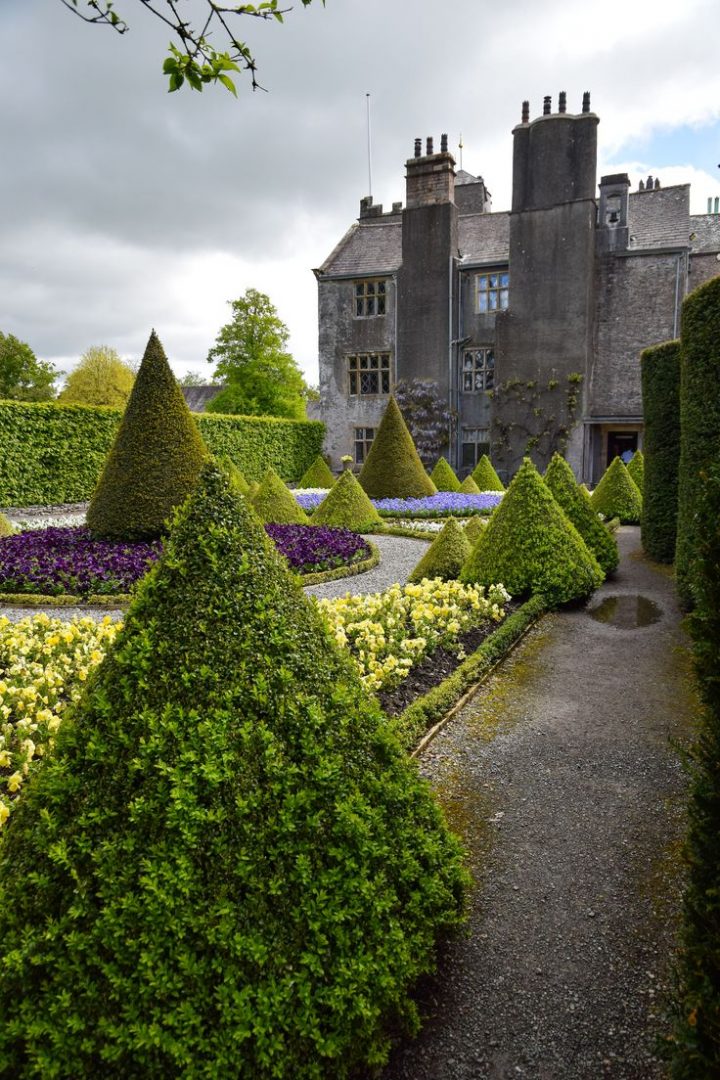
In the gardens, some of the topiary and bushes are over three hundred years old. The overall layout of the garden has changed little since the initial planting and training in the 1690s. They were created by Monsieur Guillaume Beaumont, a one-time gardener to King James II. At the time it was quite fashionable to have a garden in the Dutch style with clipped greens set in a pattern of formal box edged flower beds. The gardens of Levens Hall are unique in that they retained their original layout. Other gardens were ripped out in the 1730s to make way for the new trend of natural landscaping. (A good example of a naturally landscaped garden is Monet’s Garden which I toured last year. The post can be seen HERE.)
Here is a photo of the Levens Hall gardens during the Victorian Era. Little has changed other than the height of some of the trees.
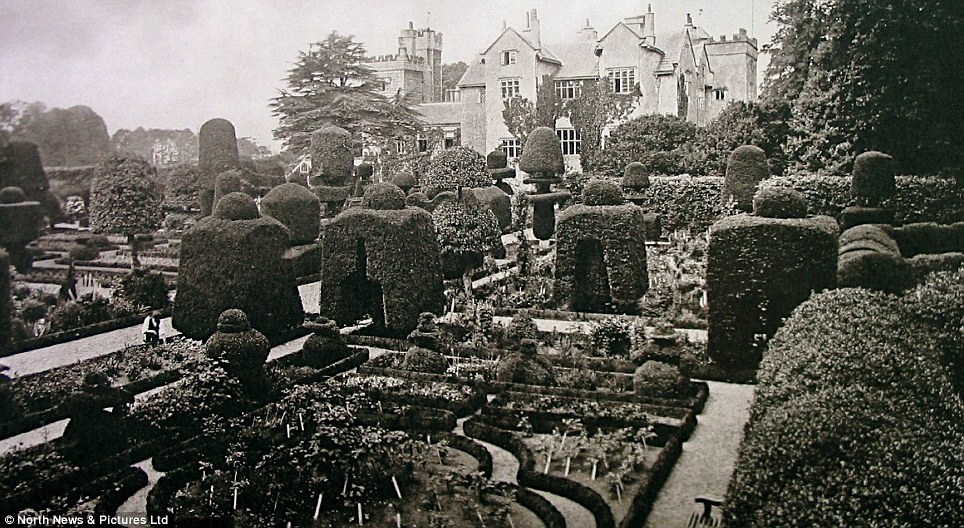
Great Heights
The tallest tree in the garden is known as “The Great Umbrella” which has a span of over 30 feet. It requires a hydraulic lift to reach the highest point.
The shapes themselves are created from plants of tight-growing, small-leaved evergreens such as Golden Yew ‘Aurea’ (Taxus baccata) ‘Aurea’, Yew (Taxus baccata), and various forms of Box (Buxus sempervirens). The low-edging around the beds is now Japanese Holly (Ilex crenata). It had to be replaced due to disease.
It now has become rather clear that in creating English style hedges you must have time and patience. The ten acre garden at Leven Hall is tended by a staff of five as well as a group of willing volunteers. Each bed in the parterre is dug and manured in the Autumn to insure a good growing soil. Trimming starts in late August and takes up to six months to complete as some of the pieces require clipping done by hand.
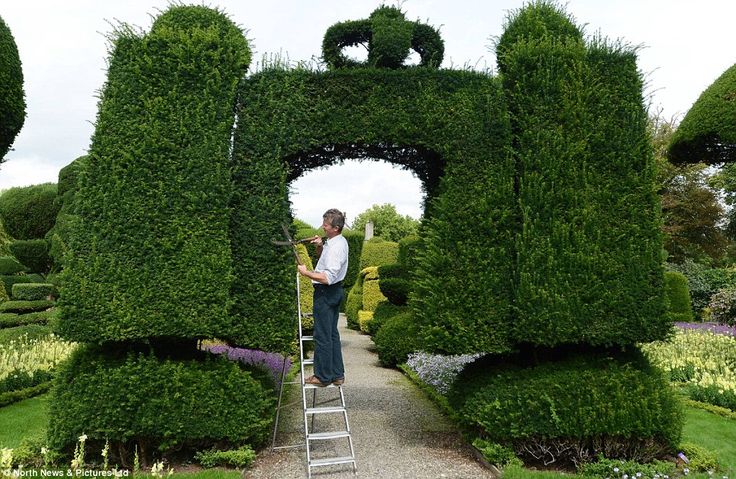
The Hedges of Storybook Cottage
A lovely hedge requires a dedicated caretaker. When we first moved in the poor holly hedges of Storybook Cottage were like neglected children. We tried our best to trim them back in the hopes they would regrow in a lush and full state.
After five years they are thriving under our care.
We also had a variety of hedges: holly, yew, boxwood, and others. Some hedges grew back well. Others tried to regrow themselves only to result in sparse “leggy” stems.
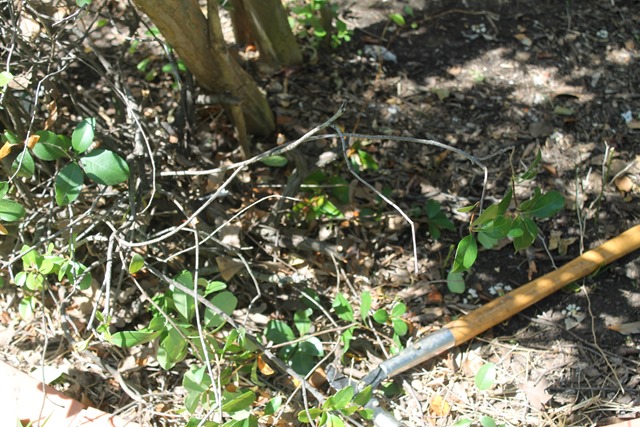
Those hedges were ripped out to make way for a fresh start.
We planted some small boxwood. They grow VERY slowly. As well as some lovely roses.
I like the look of boxwoods enclosing a flowerbed.
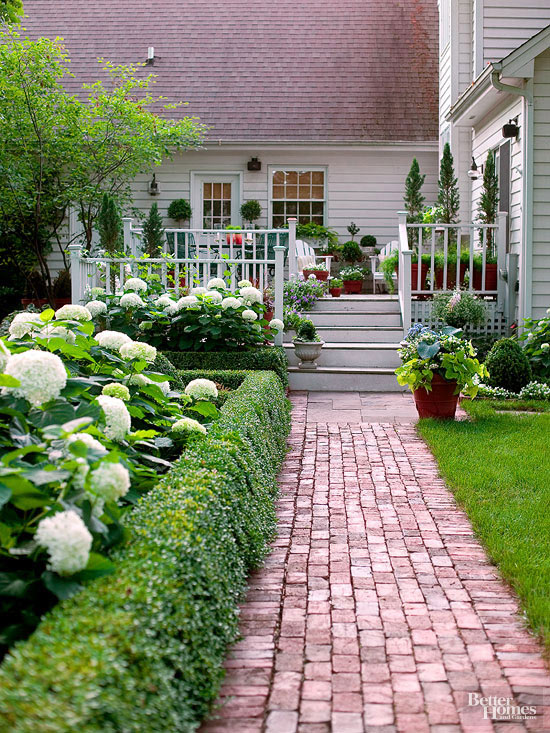
Or lining a walkway.
There is an excellent article on how to transplant boxwood cuttings to create new hedges that you can read HERE.


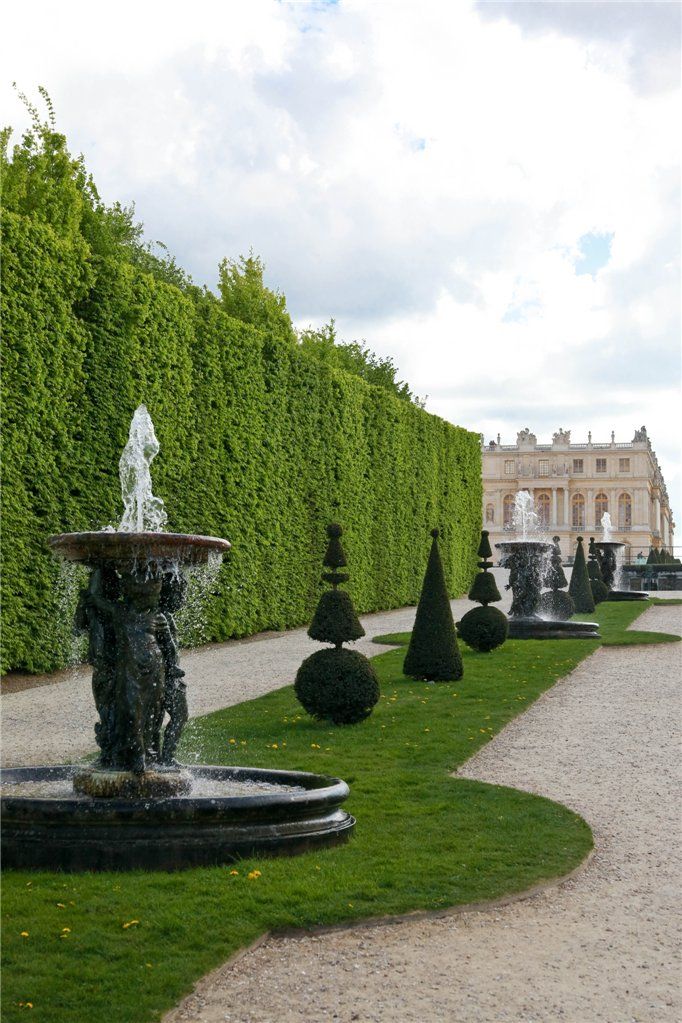

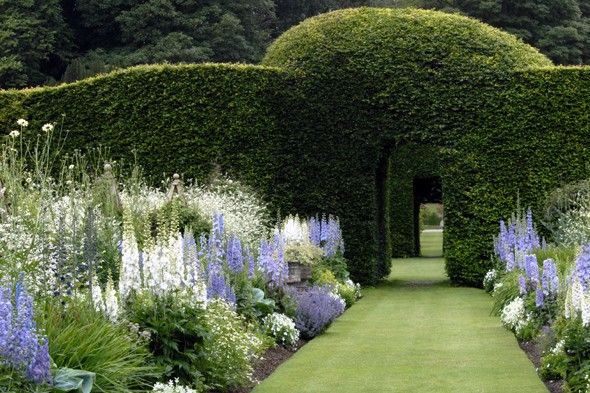

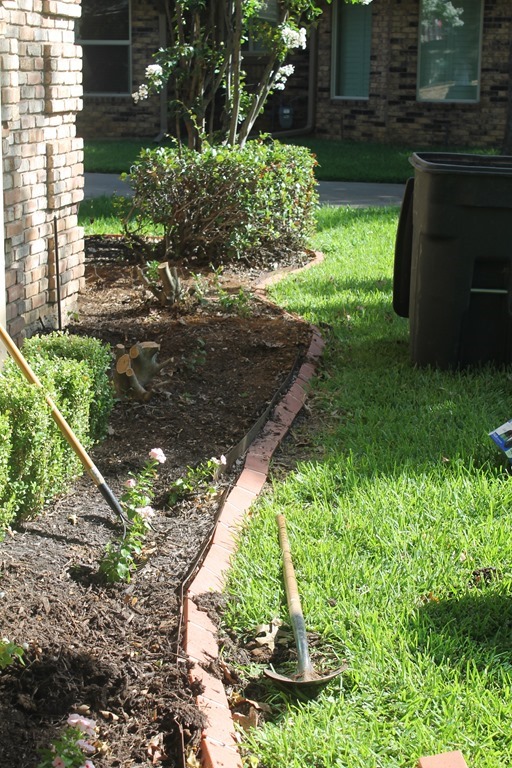
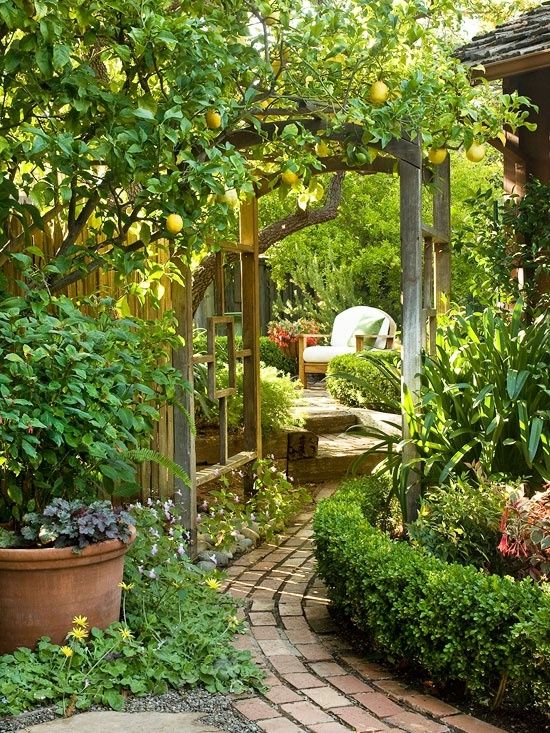

Laura, your home is going to be a showplace outside in a year or two as it already is inside. (Dieing to see the new built ins by the fireplace BTW!)
My new house has a couple of boxwoods in front and a large fenced area in back with no plants at all – I checked Kevin's blog and now I know how to propogate! Thanks.
Laura, I love the gardens you've pictured! Undertaking a garden re-do is nothing short of back-breaking and time-consuming…I know, because I've just taken on one, too! {Just posted about it this morning} I know your garden will be just beautiful…whatever you end up doing to it. Everything you've touched has turned out beautiful!!
Hugs,
JAN ♥
Oh wow, that is a lot of work. Can't wait to see the new plantings.
Hi, Laura! We share a love of English gardens. Boxwoods in Dallas are much more expensive than in Georgia–I was rather shocked when I went to buy some for my back porch urns. The yew I selected as a substitute isn't doing well, so I'm going to have to replant. Best of luck with the yard–I'm sure it will turn out lovely!
If you came down to the Texas hill country, you could have the 9 boxwoods growing in front of my house 🙂 I plan to remove them and replace with raised planters. I've chopped them back (as well as 4 Buford holly bushes) so many times, and they just regrow, lol. I'm sure yours will look much better! I have (quite literally, as I have 7.5 acres) thousands of those thorny vines, I know them as catbrier. It is nasty stuff, ugh. I started spraying it with a triclopyr solution (which I also use on the poison ivy on my property). It kills it down to the roots (just don't spray it on other trees or bushes, as it will kill them. Grass can tolerate it a little bit).
We were in the same boat but we were the ones who let our boxwoods get out of hand. That looks like briar vine. Ouch! Have fun planting something new.
As a child, when I read a series of British stories about a little bear. They were always going through hedges to some magical place or finding a mystery.
I am sure your hedges will enclose your magical Storybook cottage soon and create a lovely garden.
And if you see a little white bear with a red shirt and yellow pants, his name is Rupert! lol
Hedges are a challenge. My husband cut our cedar hedge back drastically and it's taken several years to recover. (not quite there yet). Love, love, that photo with the delphiniums. Good luck on your hedge growing. You've got some cute supervisors.
Laura, the pictures of all the gardens you posted are so beautiful. It is no fun getting established shrubbery out of the ground. It is back-breaking work, so I definitely do not envy you that job, especially during the hot summer months. I am excited about seeing your new hedges evolve!